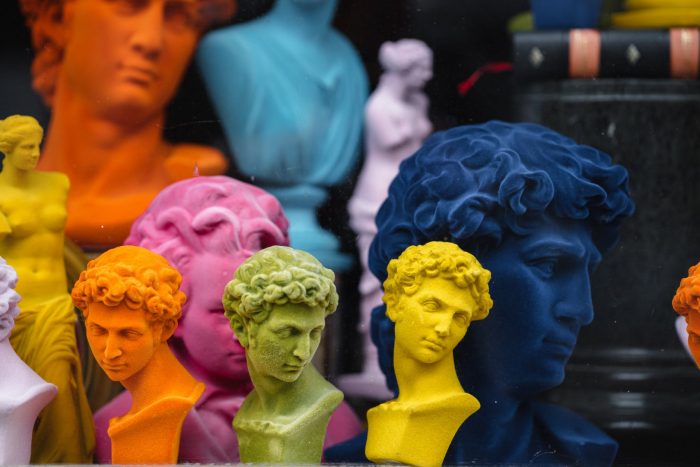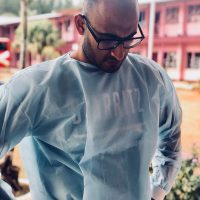Thomas Edison was an artist that had an art studio in Menlo Park, California. Yes, I know what you are thinking; Edison was a scientist, not an artist. And as a society, we have learnt to treat these two entities, very differently. But the processes they use are, in fact very similar. In fact, both are united in a kind of shared curiosity, a sense of inquiry; one conscripted by an unrelenting protocol and the other conceived from an expansive abyss like imagination. Art, often the result of individual expression or an attempt to make sense of the world that surrounds an artist. Science, on the other hand, claims the ability to find a somewhat irrefutable truth.
Human beings like Thomas Edison redefined what it meant to be a scientist. Like many others that came before him and continued to after, he teased the boundaries that separate science from art. Because our understanding of the world is based on how we have learnt to identify it. Our knowledge, primarily defined by our own consciousness; from imagery created based within our own worlds. I remember as a young boy in high school, the pressure that some of my friends felt to pursue a career in the sciences, simply because their parents wanted them to. Young men, that were talented in what was defined as conventional art — painting and sculpting. Yet they were always told that being an artist would be far less successful than being a scientist. Success, as of course measured by monetary gains, rather than profits made by producing one’s most passionate work. But science is, in fact, an art form.
There is a myth that one must play an instrument or paint colours onto an easel to display a sense of creativity. But the truth is anyone that produces a gargantuan amount of work regardless of whether it involves palette, pizzicato, penicillin or pasteurisation is an artist. All of these individuals followed processes similar to the rules of the scientific method. The underlying trait amongst individuals, whether they practice art or science, is creativity. It takes a creative genius to produce a masterpiece on an easel. But equally, it takes years of the same ability and focuses, in envisaging the double-helical structure of the elementary stuff of life.
The problem is that creativity is hard to describe or measure. There is no tangible scale to label what it is and isn’t. At times looking somewhat erratic with a haphazard presence yet at other times a sudden flicker that has taken years of leverage. It mostly involves working tirelessly towards an end that at times may not exist. In fact, it seldom contains a clear path, often asking its seekers to approach the world with inquisitiveness to see what experiences ensue. Usually, it involves using one’s own life experiences to adapt to ideas and dreams. A collaboration of questions from one’s own thoughts to provide solutions. In Edison’s case, his personal post-war life experience surrounded by death, peoples desire to question an afterlife and how to communicate with the dead, led him to formulate the phonograph. In an interview with Scientific American, he was quoted as:
“I don’t claim that our personalities pass on to another existence or sphere. I don’t claim anything because I don’t know anything about the subject; for that matter, no human being knows. But I do claim that it is possible to construct an apparatus which will be so delicate that if there are personalities in another existence or sphere who wish to get in touch with us in this existence or sphere, this apparatus will at least give them a better opportunity to express themselves than the tilting tables and raps and ouija boards and mediums and the other crude methods now purported to be the only means of communication…”
Quite simply, it was the ouija board, a contraption that claimed to provide the ability to communicate with those who had “passed over,” which first attracted his attention. And because it was not scientific enough, something better was needed, and he began to devise it. This was a classic example of the power of introversion, that allowed Edison to expand the boundaries of what was possible. And while a vision can drive one forward; left too small or rigid it can hold one back. Edison’s for a phonograph, however, was expansive enough to accommodate the idea of an ouija board to improve upon. Creativity is not reserved for geniuses, it impacts us all daily. It is just that we do not see ourselves creating. Yet all we need do is look back over the ten years of our own individual lives.
Evenings were spent around campsites with guitars, harmonicas and songs. Steve would never miss a chance to show off his sketches from the day. His drawings were rough yet recognitory, but mostly pure fun. Despite his quick and natural sense of humour, he was unable to convince his friends that he would have a successful career as a cartoonist. That his drawings of a sea sponge would remain in the pages of his sketchbook forever. Yet almost a decade later SpongeBob Squarepants became a household name and was part of most of our lives. It took Stephen Hillenberg, a marine biologist who spent time around a campfire drawing sketches of a sedentary sponge a decade to develop the idea. Often, we assume creativity requires a brand new approach never before seen by the world. But in Hillenberg’s a spark of an idea from something that existed simply in another form was able to become something huge with good old hard work, persistence, and creativity. By day Hillenberg was a scientist hard at work. But his sinews were made of the creative flair that in the traditional sense, only an artist would be said to have.
I have not failed. I’ve just found 10,000 ways that won’t work.
The ideology that creativity is a rare talent reserved to only a few in itself keeps us from realising that all of us simply express creativity differently. Some of us are brilliant at working out excel spreadsheets, others, make excellent doctors. Some of us can build a house from scratch, while others can pick a good investment from a pile of rubble. There is, in fact, an art form to everything we do. One borne of methodical rigour, akin to the scientific process.











Read 0 comments and reply